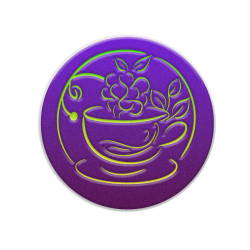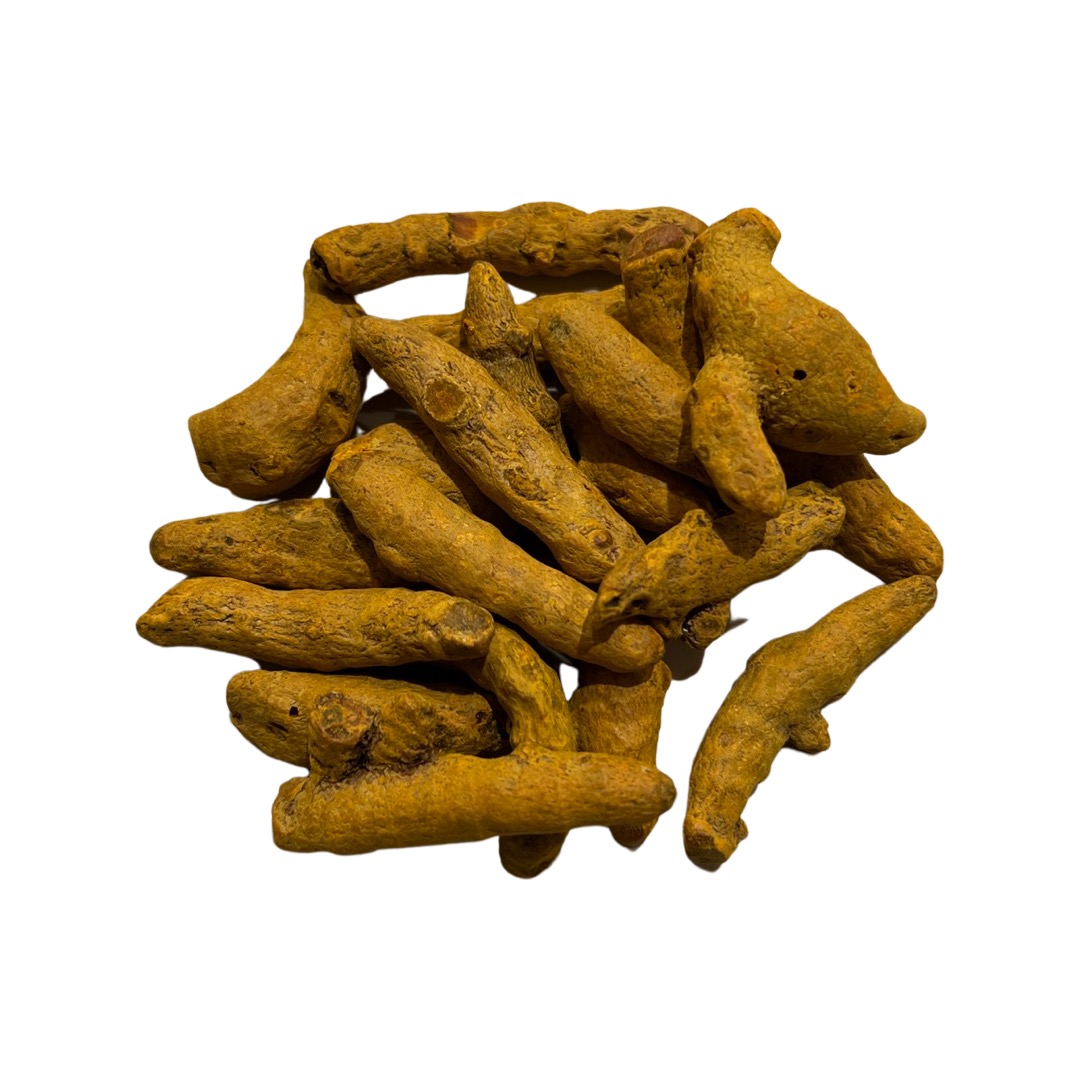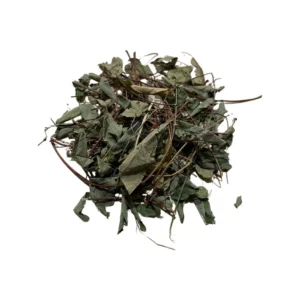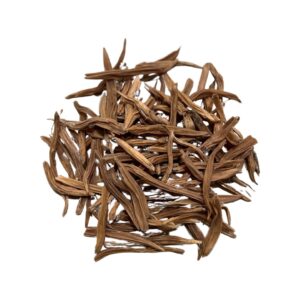ENERGETICS
Rasa (taste) Pungent, bitter, astringent
Virya (energy) Heating
Guna (quality) Dry, light
Dosa effect VPK-,PV+ in excess
Dhatu (tissue) All the tissues
Srotas (channel) Digestive, circulatory, respiratory, female reproductive
CONSTITUENTS
Phenylpropanoids Yellow pigments; curcumin, curcumenone, curcumenol
Essential Oils Sesquiterpene ketones, zingiberene, phellandrene, borneol, cineole
Glycans Uknonans
(Mills & Bone 2000, Williamson 2002)
AYUREVEDIC ACTION
Lehaniya ‘Scraping’ property
Di pana Enkindles the digestive fire
Prameha Useful in diabetes
Pandughna Useful in Anaemia
Raktasodhana Blood Purifier
Artavajanana Promotes menses
Jvaraghna Alleviates fever
Visaghna Destroys Poisions
Krmighna Worm destroying
Varnya Complexion enhancer
Kusthagna Removes skin diseases
Kandughna Stops Itching
Vedanasthapana Analgesic
Sandhaniya Heals broken bones
Sirovurecana Useful in clearing stagnation from the head
Stanyasodhaka Purifies breast milk
BIOMEDICAL ACTION
Emmenagogue, blood tonic, carminative, antibacterial, cholagogue, alternative, vulnerary, anti-inflammatory, antiplatelet, hypolipidaemic, antioxidant, anticarcinogenic
INDICATIONS
Digestion For all intestinal infections. Tumeric helps to promote ‘sweet’ intestines by reducing pathogenic bacteria and destroying ama. It had recently been proven to have an affinity for the large intestine and to play a preventative role in bowel cancer. Other clinical trials have proven its efficacy at treating dyspepsia and stomach ulcers. Its bitter and pungent flavours act on the agni of rasa dhatu and enhance its ability to nourish plasma and blood. Traditionally used in diabetes to clear ama, khapa and excess fat tissue (Paranjpe 2001, Bone 2003).
LIVER
A stimulant effect to the liver and ranajaka pitta increases the flow of blood through the hepatic system and increases bile output. This helps to dissolve and prevent gallstones. It is traditionally considered a blood ‘purifier’ and is often used for beautifying the skin and clearing systematic toxaemia: eczema, urticaria, psoriasis and acne. As with many liver herbs it is also good for the eyes; a wash is used for conjunctivitis and styes (Frawley & Lad 1994).
Gynaecology Tumeric is used to clear kapha accumulations from lower abdomen, uterus, and apanaksetra. Fibroids, cysts, endometriosis, dysmenorrhea, amenirriea and leucorrhoea are all treated by reducing congestion. As a specific herb for rasa dhatu it also works on its secondary tissue stanyasrotas and is used to purify breast milk as well as to promote the flow of menses. A poulrice can be very effective in mastits (Atreya 1998).
Inflammation Curcumin reduces inflammation caused by arachidonic acid (cf usage for dysmenorrhea). It is used in dermatitis, eczema. Urticaria, psoriasis, colitis, asthma, rheumatoid arthritis, osteoarthritis. Hence it is used in pitta-kapha conditions at low doses and mixed with other bitter herbs. It is also renowned antibacterial (Bone 2003).
Joints It treats inflammation of the joints, alleviates pain and strengthens the joints and tendons. Useful for treating gout, arthritis, broken bones and wounds.
Heart Tumeric nourishes the heart by virtue of its raktavardhaka and blood building quality. By increasing blood flow and reducing total cholesterol turmeric helps the functions of the heart. It has an antiplatelet activity and scrapes accumulations from the channels (lekhaniya) which helps to prevent coagulation and reduce kapha in the blood (Gogte 2000).
Infections Tumeric is an excellent antibiotic useful in fevers and sore throat and septicaemia.
External Excellent for reducing pain as a topical application in bruises, infections, sprains, and pain. Use It carefully as it stains the skin and anything it comes into contact with.
CONTRADICTIONS
Caution in high vata and pitta. Be vigilant if gallstones are present. As turmeric stimulates the movement of blood it is used with caution at medicinal doses during pregnancy and in those trying to conceive. Not in acute jaundice and hepatitis (Bone 2003)
SAFETY
Much literature recommends that turmeric should be given if antiplatelet or anticoagulant medication is being taken, as cyclooxygenase (COX) inhibition by turmeric will disenable platelets and further encourage clotting prevention, Bone advises a maximum dosage of 15g per day, hence it is not contradicted , but patients on warfarin should be monitored closely so that cumulative blood-thinning effect of both medicinals does not exacerbate the effect of warfarin and necessitate dosage adjustment (Bone 2003, Treasure 2000).
DOSAGE
1-10 g per day dried root or 3-15ml per day of a 1:3 @ 45% tincture.





Reviews
There are no reviews yet.